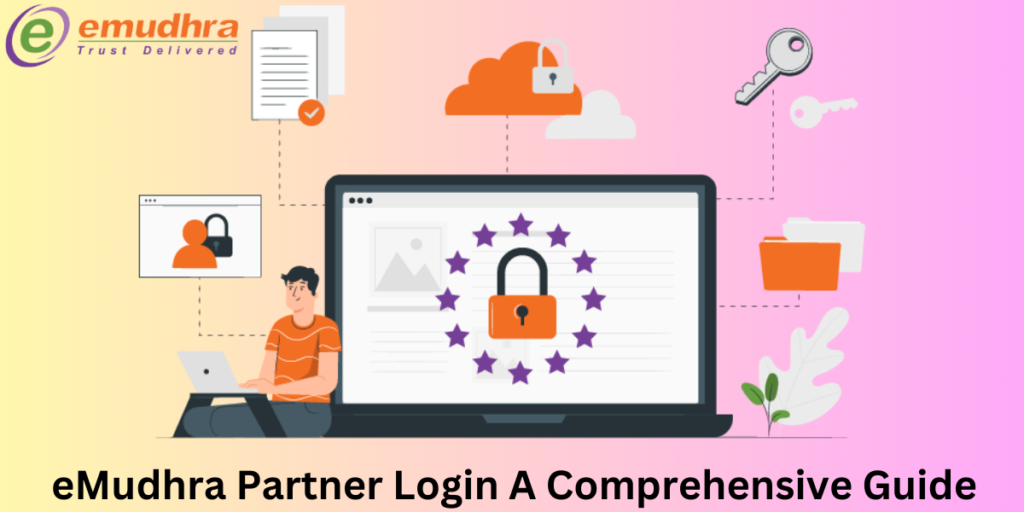In today’s fast-paced digital landscape, effective onboarding is more crucial than ever. Companies are realizing that a seamless transition for new hires can set the tone for their entire experience within the organization.
Enter Digital Onboarding 58m Volition Capitalhalltechcrunch approach that not only streamlines processes but also enhances employee engagement from day one.
With investments like the recent $58 million by Volition Capital, it’s clear that businesses recognize the immense value of adopting advanced technologies to improve this critical phase.
Discover how Digital Onboarding 58m Volition Capitalhalltechcrunch is reshaping workplace dynamics and paving the way for success in an increasingly competitive environment.
Also read: Increaseupcard.org | A Complete Guide | Apple Teleport: Revolutionizing Digital Communication | STRAY KIDS Bang Chan Net Worth Profile, Age
What is Onboarding and Why is it Important?
Onboarding is the process by which new employees are integrated into an organization, familiarized with its culture, mission, values, and provided with the necessary training and resources to be successful in their roles. It is a crucial step in ensuring that new hires acclimate to their new work environment, integrate into the company culture, and become effective contributors
Importance of Onboarding
Onboarding is important for several reasons:
- Acclimation and Integration: It helps new employees acclimate to their new work environment, integrate into the company culture, and understand their roles within the organization
- Employee Retention: Effective onboarding has been linked to higher employee retention rates. New employees who complete a structured onboarding program with clear goals are 58% more likely to still be with their organization after three years
- Productivity and Engagement: The first 90 days are pivotal for a new hire, and the onboarding process significantly influences an employee’s productivity, engagement, and retention rates
- Training and Skill Development: Onboarding and training go hand in hand to best equip new employees to be successful. Training is the number one factor millennials consider when starting a new job and is important to employee satisfaction
- Cultural Expectations: Onboarding covers cultural expectations, helping new hires understand the organization’s mission, vision, and values, and how their work contributes to the organization’s goals 1
The Benefits of Digital Onboarding for Companies and Employees
Digital onboarding offers numerous benefits for both companies and employees, contributing to a more efficient and effective onboarding process. Here are some of the key advantages:For Companies:
- Cost-Effectiveness: Digital onboarding provides a cost-effective solution for companies, saving costs associated with traditional onboarding processes and reducing the expenses related to employee turnover
- Efficiency and Time Savings: It minimizes the time to performance in more than 60% of cases, allowing new hires to become productive more quickly. Additionally, having all onboarding information at their fingertips saves managers from having to sift through endless paperwork.
- Customization and Personalization: Companies can create a personalized onboarding experience, tailored to the end-user, and integrate digital tools effectively with other communication channels to engage various audiences
- Compliance and Data Accessibility: Digital onboarding allows companies to continually leverage compliance processes that effectively check and onboard consumers, sole traders, SMEs, corporates, and charities alike. It also provides access to a range of business data, such as registered company information, company structure, director details, and even credit scores
For Employees:
- 24/7 Access and Convenience: Digital onboarding provides 24/7 centralized access to all information, allowing new hires to learn quickly and effectively at their own pace
- Preparation and Engagement: Digital learning makes new hires feel more prepared as they enter the company culture, increasing employee engagement.
- Reduced Information Overload: Digital onboarding protects employees from information overload and allows them to track the completion of their onboarding process .
Also read: 20M Khosla 30mWiggersTechCrunch | My insite schedule sign in process macy | Window Snyder Microsoft Mozilla Applefranceschibicchieraitechcrunch
The Evolution of Onboarding: From Paper to Digital
Onboarding has come a long way from its paper-based roots. Traditionally, new hires faced stacks of paperwork on their first day. This often led to confusion and frustration.
With the rise of technology, many companies shifted to digital solutions. Electronic forms replaced cumbersome printouts, streamlining processes significantly. New employees could complete necessary documentation from anywhere.
The advent of cloud computing introduced even more flexibility. Companies began utilizing onboarding platforms that centralize information in one accessible location. Video tutorials and interactive training modules became commonplace.
Today’s Digital Onboarding 58m Volition Capitalhalltechcrunch experiences are engaging and highly efficient. Gamification elements enhance learning while fostering a sense of community among new team members. Organizations now prioritize user-friendly interfaces for seamless navigation through tasks.
As businesses continue to evolve, digital onboarding adapts accordingly, reflecting changing needs and expectations in the workplace environment.
Advantages of Digital Onboarding
Digital Onboarding 58m Volition Capitalhalltechcrunch streamlines the introduction of new employees into an organization. This efficiency saves time for both HR teams and new hires, allowing for a quicker start on essential tasks.
Flexibility is another key advantage. With digital platforms, onboarding can occur anytime and anywhere. New employees can engage with materials at their own pace, enhancing their learning experience.
Cost-effectiveness also cannot be overlooked. By reducing paper usage and minimizing in-person training sessions, companies save money while promoting sustainability.
Moreover, digital onboarding fosters engagement through interactive content. Gamified training modules or multimedia presentations make the process more appealing to newcomers.
Tracking progress becomes easier with digital tools. Employers can monitor completion rates and gather feedback instantly, ensuring that each employee has a successful transition into their role.
Also read: Group VC AzevedoTechCrunch | MyACI at Albertsons Every Shopper Should Sign Up
Key Features of Digital Onboarding Platforms
Digital onboarding platforms come equipped with several essential features that streamline the process for both employers and new hires. User-friendly interfaces allow employees to navigate through tasks effortlessly, reducing confusion right from day one.
Interactive checklists help track progress in real time. This ensures that nothing is overlooked as new hires complete necessary steps.
Automated workflows save time by eliminating repetitive manual processes. Notifications keep everyone informed about deadlines and documentation needed.
Personalized learning paths cater to individual roles, making training more relevant and engaging. Integration capabilities with existing HR systems enhance efficiency further.
Robust analytics tools offer insights into onboarding performance, helping organizations refine their approach continuously. These metrics can reveal areas of improvement, ensuring a smoother experience for future cohorts.
Moreover, seamless communication channels foster connection between new employees and team members, promoting early relationship building within the organization.
Case Studies: Successful Implementation of Digital Onboarding

A leading tech company recently transformed its onboarding process by adopting a digital platform. New hires were able to access training materials and important documents from day one. This shift reduced the time spent on administrative tasks, allowing managers to focus on mentorship.
In another example, a healthcare organization leveraged Digital Onboarding 58m Volition Capitalhalltechcrunch tools to streamline compliance training. Employees could complete necessary courses at their convenience, ensuring they hit the ground running without delays.
One financial services firm utilized analytics within its digital system to track new employee progress. The data revealed areas for improvement in training modules, helping refine the program over time.
These case studies highlight how tailored solutions can enhance efficiency and engagement during the onboarding journey. By embracing technology, companies not only improve their processes but also create a more welcoming environment for newcomers.
Common Challenges and How to Overcome Them
Implementing digital onboarding can come with its fair share of challenges. One major hurdle is resistance to change from employees who are accustomed to traditional methods. Engaging stakeholders early in the process can help ease this transition.
Another common issue is ensuring that all technological tools work seamlessly together. Conduct thorough testing before launch and provide training sessions for staff to familiarize them with the new system.
Data security also poses a concern, especially when handling sensitive information. It’s vital to invest in secure platforms and educate employees on best practices for data protection.
Keeping content engaging is crucial. Employees may disengage if they find materials boring or overwhelming. Incorporating interactive elements, such as quizzes or videos, can enhance user experience significantly while maintaining interest throughout the onboarding journey.
Future Trends in Digital Onboarding
The landscape of digital onboarding is rapidly evolving. Companies are increasingly leveraging artificial intelligence and machine learning to personalize the onboarding experience. Imagine a system that adapts training modules based on individual learning speeds and styles.
Another trend gaining traction is mobile-first onboarding solutions. With remote work becoming standard, employees expect seamless access to resources from their devices. This flexibility bolsters engagement right from day one.
Virtual reality (VR) is also making its mark in onboarding practices. It provides immersive experiences for new hires, enabling them to navigate complex environments or scenarios interactively.
Data analytics will play a crucial role as well. Organizations will utilize insights gathered during the onboarding process to refine strategies continually and enhance retention rates.
These innovations promise not just efficiency but also improved employee satisfaction, setting the stage for future workforce success.
Also read: Alexapowered Echo FrameswiggersTechCrunch | Dow Jones FintechZoom
Conclusion:Digital Onboarding 58m Volition Capitalhalltechcrunch
Digital onboarding is transforming the way companies integrate new employees. The shift from traditional methods to digital processes brings a wealth of benefits, enhancing the experience for both employers and employees.
As organizations increasingly recognize the importance of seamless onboarding, they are investing in innovative solutions that streamline this process. By leveraging technology, businesses can create an engaging environment where new hires feel welcomed and informed right from day one.
The advantages of digital platforms extend beyond mere convenience; they offer scalability, efficiency, and data-driven insights that were previously unattainable with paper-based systems. Companies implementing these tools see improved retention rates and faster time-to-productivity among their new teams.






